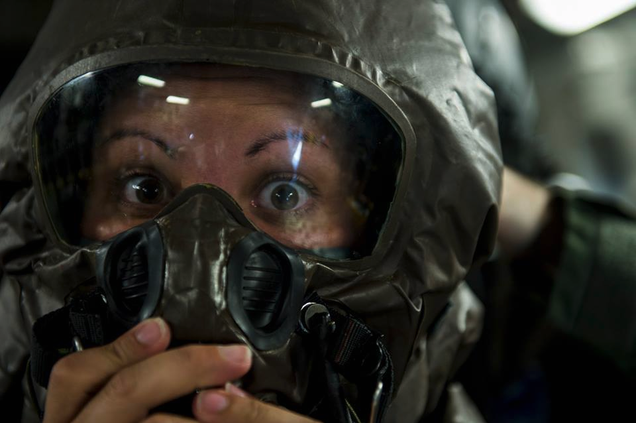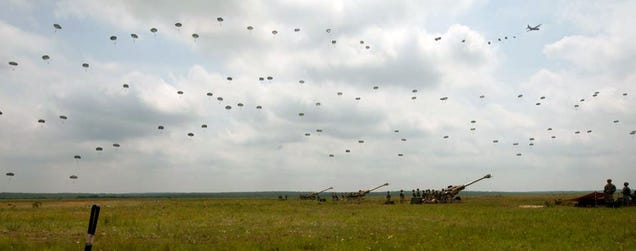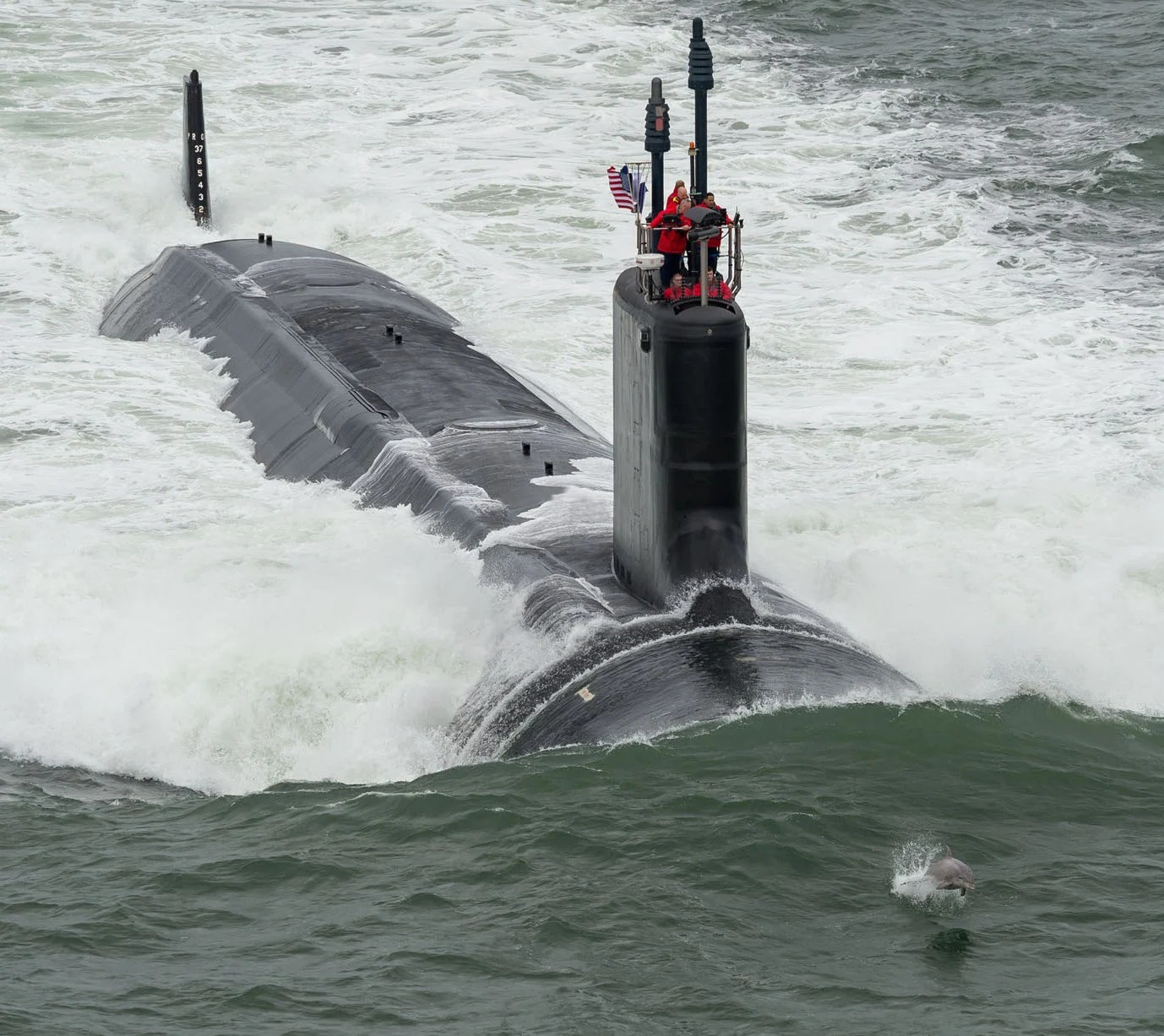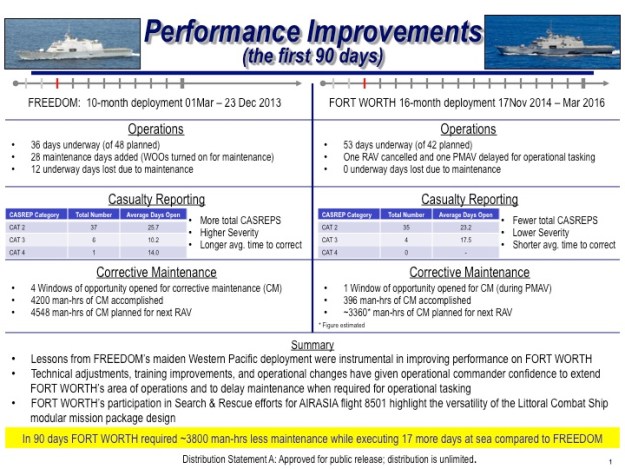AMDR
FULL MEMBER

- Joined
- Sep 28, 2014
- Messages
- 1,109
- Reaction score
- 16
- Country
- Location
Navy Preps to Build Next Generation LXR Amphibious Assault Ship
Navy Preps to Build Next Generation LXR Amphibious Assault Ship | Defense Tech
The Navy is preparing to build its new LXR amphibious assault ship in order to meet the fast-rising need for amphibs across the globe, Congressional sources said.
Efforts to begin the process of production and delivery of the new ship come as the service is finalizing its plans to start a competition to build the vessel — a new platform designed to replace the services’ existing fleet of LSD 41/49 dock landing ships.
The existing Navy plan calls for the service to award the detail design and construction contract for the lead ship by 2020 with delivery planned for 2026, Maj. Gen. Robert Walsh, director of Navy Expeditionary Warfare, told Military.com.
However, during its mark-up of the 2016 defense bill, House Armed Services Committee lawmakers added $279 million for advanced procurement of materials for the LXR.
The Navy is now finishing up what’s called a capabilities development document in preparation to release a formal proposal to industry groups interested in competing to build the new ship.
After an extensive analysis, the Navy has decided to base the LXR design upon the hull of an LPD 17 Amphibious Transport Dock, Walsh added.
This decision means the new ship will have more command and control technologies and aviation capability than the LSD ships they are replacing in order to allow for more independent operations.
This is because the LSD, which is key to bringing a lot of equipment from ship to shore inLanding Craft Air Cushions, or LCACs, does not have the same ability to operate independently of an Amphibious Ready Group compared to the LPD 17.
“An Amphibious Ready Group has traditionally been together in three ships. Now, in today’s environment, the new normal for operations means that we are splitting those ships out in three different directions in many cases. Having an LPD 17-type ship for the LXR is going to allow us to do even more,” Walsh explained.
The 1980’s era LSD dock landing ships consist of eight Whidbey Island-class 609-foot long ships. The 15,000-ton ships, configured largely to house and transport four LCACs, are nearing the end of their service life.
Both the LSD and the San Antonio-class LPD 17 amphibious transport docks are integral to what’s called an Amphibious Ready Group, or ARG, which typically draws upon a handful of platforms to ensure expeditionary warfighting technology. The ARG is tasked with transporting up to 2,200 Marines and their equipment, including what’s called a Marine Expeditionary Unit, or MEU.
The current configuration of the LPD transport dock is slightly different than the LSD dock landing ship in that it has more aviation capability, more command and control equipment, a crane for use on small boats and a different well deck configuration, Navy officials said.
The LPD is designed to operate with greater autonomy from an ARG and potentially conduct independent operations as needed. A LSD is able to operate four LCACs and the more autonomous LPD 17 can launch two LCACs.
Having more amphibs engineered and constructed for independent operations is seen as a strategic advantage in light of the Pacific rebalance and the geographical expanse of the region. The widely dispersed territories in the region may require a greater degree of independent amphibious operations where single amphibs operate separately from a larger ARG.
Walsh explained that the greater use of amphibious assault ships is likely as the Marine Corps continues to shift toward more sea-based operations from its land-based focus during the wars in Iraq and Afghanistan.
Also, the LPD is able to transport up to four CH-46 Sea Knight helicopters or two MV-22 Ospreys. The Navy had been planning on maintaining only 11 LPDs in the fleet, however additional funding has allowed the service to procure a long-desired 12th LPD, Navy officials said.
Overall, the Navy’s need for amphib continues to outpace the amount of ships available for missions, many Navy and Marine Corps leaders have said.
Navy and Marine Corps leaders have said the service needs as many as 50 amphibious assault ships to meet the needs of combatant commanders worldwide. Recognizing that reaching that number is not possible in today’s fiscal environment, Navy leaders have taken a number of steps to ensure more of the needed missions can be accomplished.
As part of this effort, the Navy has stood up an auxiliary platforms council designed to help develop other ships able to pick up a portion of the missions typically performed by amphibs.
This includes greater use of Mobile Landing Platforms, or MLPs, Afloat Forward Staging Bases, or AFSBs and Joint High Speed Vessels, or JHSVs, to perform the missions, Walsh said.
“We’re looking at all the different ways to repurpose them and use them in different ways to augment the current fleet. If you take these ships for some operations you can allow an amphibious ready group to focus on other missions,” he said.
Some of these missions might include anti-piracy, humanitarian assistance, disaster relief or the delivery of medical supplies, Walsh added.
Navy Preps to Build Next Generation LXR Amphibious Assault Ship | Defense Tech
The Navy is preparing to build its new LXR amphibious assault ship in order to meet the fast-rising need for amphibs across the globe, Congressional sources said.
Efforts to begin the process of production and delivery of the new ship come as the service is finalizing its plans to start a competition to build the vessel — a new platform designed to replace the services’ existing fleet of LSD 41/49 dock landing ships.
The existing Navy plan calls for the service to award the detail design and construction contract for the lead ship by 2020 with delivery planned for 2026, Maj. Gen. Robert Walsh, director of Navy Expeditionary Warfare, told Military.com.
However, during its mark-up of the 2016 defense bill, House Armed Services Committee lawmakers added $279 million for advanced procurement of materials for the LXR.
The Navy is now finishing up what’s called a capabilities development document in preparation to release a formal proposal to industry groups interested in competing to build the new ship.
After an extensive analysis, the Navy has decided to base the LXR design upon the hull of an LPD 17 Amphibious Transport Dock, Walsh added.
This decision means the new ship will have more command and control technologies and aviation capability than the LSD ships they are replacing in order to allow for more independent operations.
This is because the LSD, which is key to bringing a lot of equipment from ship to shore inLanding Craft Air Cushions, or LCACs, does not have the same ability to operate independently of an Amphibious Ready Group compared to the LPD 17.
“An Amphibious Ready Group has traditionally been together in three ships. Now, in today’s environment, the new normal for operations means that we are splitting those ships out in three different directions in many cases. Having an LPD 17-type ship for the LXR is going to allow us to do even more,” Walsh explained.
The 1980’s era LSD dock landing ships consist of eight Whidbey Island-class 609-foot long ships. The 15,000-ton ships, configured largely to house and transport four LCACs, are nearing the end of their service life.
Both the LSD and the San Antonio-class LPD 17 amphibious transport docks are integral to what’s called an Amphibious Ready Group, or ARG, which typically draws upon a handful of platforms to ensure expeditionary warfighting technology. The ARG is tasked with transporting up to 2,200 Marines and their equipment, including what’s called a Marine Expeditionary Unit, or MEU.
The current configuration of the LPD transport dock is slightly different than the LSD dock landing ship in that it has more aviation capability, more command and control equipment, a crane for use on small boats and a different well deck configuration, Navy officials said.
The LPD is designed to operate with greater autonomy from an ARG and potentially conduct independent operations as needed. A LSD is able to operate four LCACs and the more autonomous LPD 17 can launch two LCACs.
Having more amphibs engineered and constructed for independent operations is seen as a strategic advantage in light of the Pacific rebalance and the geographical expanse of the region. The widely dispersed territories in the region may require a greater degree of independent amphibious operations where single amphibs operate separately from a larger ARG.
Walsh explained that the greater use of amphibious assault ships is likely as the Marine Corps continues to shift toward more sea-based operations from its land-based focus during the wars in Iraq and Afghanistan.
Also, the LPD is able to transport up to four CH-46 Sea Knight helicopters or two MV-22 Ospreys. The Navy had been planning on maintaining only 11 LPDs in the fleet, however additional funding has allowed the service to procure a long-desired 12th LPD, Navy officials said.
Overall, the Navy’s need for amphib continues to outpace the amount of ships available for missions, many Navy and Marine Corps leaders have said.
Navy and Marine Corps leaders have said the service needs as many as 50 amphibious assault ships to meet the needs of combatant commanders worldwide. Recognizing that reaching that number is not possible in today’s fiscal environment, Navy leaders have taken a number of steps to ensure more of the needed missions can be accomplished.
As part of this effort, the Navy has stood up an auxiliary platforms council designed to help develop other ships able to pick up a portion of the missions typically performed by amphibs.
This includes greater use of Mobile Landing Platforms, or MLPs, Afloat Forward Staging Bases, or AFSBs and Joint High Speed Vessels, or JHSVs, to perform the missions, Walsh said.
“We’re looking at all the different ways to repurpose them and use them in different ways to augment the current fleet. If you take these ships for some operations you can allow an amphibious ready group to focus on other missions,” he said.
Some of these missions might include anti-piracy, humanitarian assistance, disaster relief or the delivery of medical supplies, Walsh added.










 :
: It's a cute picture with the dolphin. I'll delete mine, you can have this one
It's a cute picture with the dolphin. I'll delete mine, you can have this one .
.




